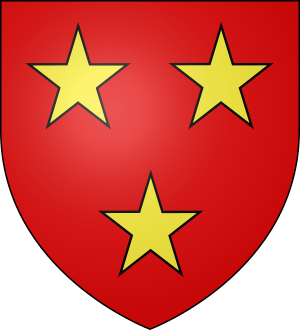William de Moravia, 2nd Earl of Sutherland facts for kids
Quick facts for kids
William de Moravia, 2nd Earl of Sutherland
|
|
|---|---|

de Moravia Earl of Sutherland Coat of Arms
|
|
| Born | c.1235 |
| Died | 1307 Sutherland, Scotland |
| Allegiance | Scotland |
| Battles/wars | Scottish–Norwegian War |
| Relations | William de Moravia, 1st Earl of Sutherland (father) William de Moravia, 3rd Earl of Sutherland (son) |
William de Moravia (also known as William Sutherland) was an important Scottish nobleman who lived from about 1235 to 1307. He was the 2nd Earl of Sutherland and the leader, or chief, of the Clan Sutherland. This clan is a famous Scottish clan from the Scottish Highlands.
Contents
Becoming the Earl of Sutherland
William de Moravia first appears in historical records around 1263. These records, called the Exchequer Rolls of Scotland, show that he was already the Earl of Sutherland. At this time, the Sheriff of Inverness paid money to the king from the Earl of Sutherland. This might have been related to the Scottish–Norwegian War, which happened in 1263.
Solving a Land Dispute
In 1269, William, Earl of Sutherland, was at Nairn. He witnessed an important document about land given to the church of Moray.
Around the same time, the Earl of Sutherland had a disagreement with the church. This dispute was about lands that included Skibo Castle. The argument had actually started during his father's time.
They finally reached an agreement at Dornoch Cathedral. It was decided that the lands belonged to the church. William, the 2nd Earl, received other lands called Owenes as a fair trade.
Dealing with Royal Succession
In 1284, William, 2nd Earl of Sutherland, attended a special meeting called by Alexander III of Scotland at Scone. The king needed to discuss who would rule Scotland after him. This was because his son and daughter had died, leaving only his young granddaughter, known as the Maid of Norway.
After King Alexander died, it's not clear which side the Earl of Sutherland supported at first. However, he was among the Scottish nobles who met with Edward I of England in 1290. They agreed to a marriage between the Prince of Wales and the young Queen of Scotland.
Oaths to the English King
In 1291, Edward I of England visited Scotland. He asked the Earl of Sutherland to swear loyalty to him at Inverness Castle. It seems the Earl did take this oath.
The Earl of Sutherland did not join a rebellion against the English King in 1296. He seemed to stay loyal to the English side, just as Robert the Bruce was at that time. On August 28, 1296, the Earl of Sutherland officially swore loyalty to the English King at Berwick-upon-Tweed. Records show he remained loyal to the English King in 1304 and 1306.
When Did William de Moravia Die?
Some older historians, like Sir Robert Gordon, 1st Baronet, thought that William, 2nd Earl of Sutherland, fought with Robert the Bruce at the Battle of Bannockburn in 1314 and died in 1325.
However, more recent discoveries of old documents show this is not true. Historian William Fraser found letters that prove William, Earl of Sutherland, died between April 1306 and September 1307. This means he died even before Edward I of England, who passed away in July 1307. Modern historians also agree with this timeline.
Family Life
William de Moravia, 2nd Earl of Sutherland, had two sons:
- William de Moravia, 3rd Earl of Sutherland: He was William's heir and took over as Earl after his father.
- Kenneth de Moravia, 4th Earl of Sutherland: He became Earl after his older brother.

